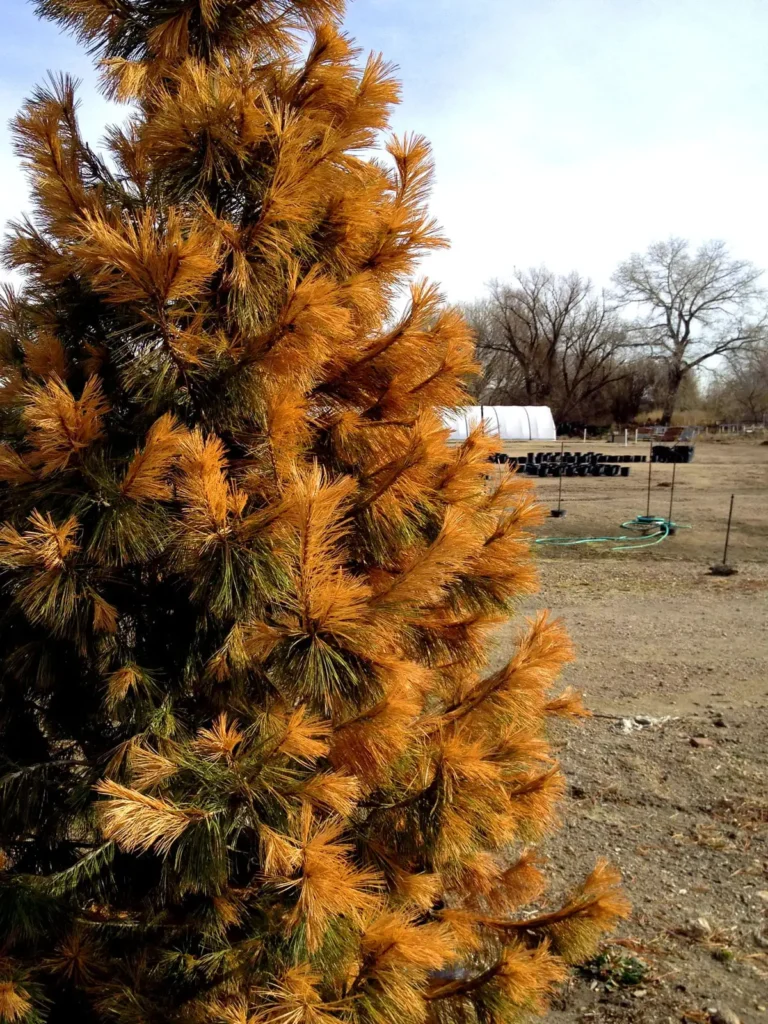As we move through the colder winter months, you may notice that your evergreen plants change color to brown, orange, or even purple from their typical rich green. What causes these changes, and how do we manage the effects of this change? Let’s dive through some recent scientific literature to consider the problem and come up with treatment solutions.
First, it’s important to distinguish what we mean when we say color change or commonly called “winter bronzing.” This is a change in the leaf coloration from green to brown, tan, orange, or purple as previously described. However, the phenomenon of winter bronzing is one that is also reversible meaning the leaf coloration can recover after the winter season ends. As we enter into spring, if the foliage does not revert back to a green color then our plants are experiencing winter damage. This may be due to winter leaf desiccation or pathogens, and would not be subject to the topic being discussed in this article.
Leaf discoloration is a common symptom on evergreen trees and shrubs like Boxwoods, Junipers, Arborvitae, and more. The initial assumption by experts in the industry may be a nutrient deficiency. Oftentimes soil conditions and fertility can lead to browning and yellowing of leaves, and this telltale sign has been used by farmers and horticulturalists to pinpoint nutrient problems in plants. Growers in the industry can even tell what element may be deficient based on which leaves are showing color, meaning the newest foliage or the mature foliage. This can indicate a mobile vs immobile element deficiency. So, in horticulture, we’ve been trained for a very long time that discolored leaves are usually an indicator of nutrient deficiency, but this is not always the case.

Some nutrient deficiencies manifest different leaf symptoms.
In a recent research study, discoloration was observed on a number of different boxwood varieties. The evergreen shrubs very commonly discolor during winter. Industry professionals may be quick to diagnose a nutrient deficiency; the study looked at other possible factors and controlled for nutrition.
In this study, some of the different boxwoods were planted in different conditions, and surprisingly a boxwood shrub in a shaded area showed more winter discoloration than a full-sun planting. These plants were controlled for nutrition and water, but the shading had a significant effect on the coloration.
Variety/cultivar was also found to be a significant factor in winter color change. The study found that some varieties were naturally less likely to change color in those cold winter months than others. Some varieties of boxwood hybrids on the market do advertise their winter color fastness, but these advertised traits aren’t always well-studied or tested before being marketed. Some degree of skepticism is always good to hold when comparing cultivars for planting in your home landscape.
Winter bronzing was found most affected by sun intensity through winter months. This means keeping plantings of evergreen shrubs, specifically boxwood species, in south-facing full-sun areas of your garden will do best at maintaining color all through winter. An anti-desiccant spray can help prevent damage from cold dry winter winds, and fertilization may help the shrubs thrive but isn’t always a source of winter bronzing. There are some fungal blights and arthropod pests of boxwood that may cause defoliation and damage. Any pests or pathogens attacking your landscape plants would need to be addressed before considering winter bronzing.
If you need help preserving the beauty of your landscape trees and shrubs, Homer Tree Care’s plant health care professionals can advise on best practices and tailor a plan specifically for your landscape needs. Call us for a free consultation and estimate for care, and one of our certified arborists can meet with you as soon as possible.

